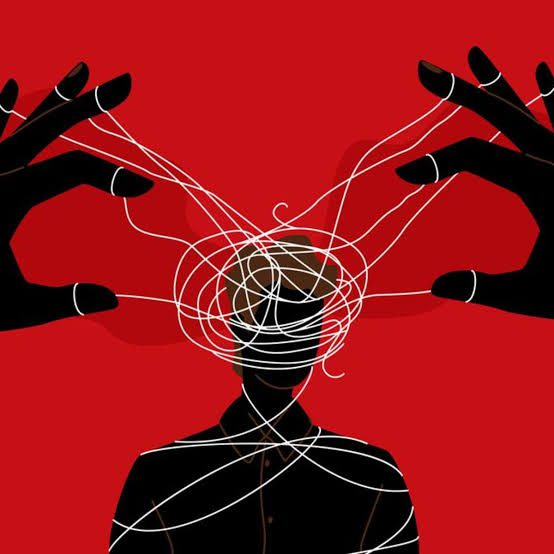
Emotional Manipulation
The human toll of emotional manipulation is starkly evident, as its intricate web of tactics casts a shadow over the already tumultuous landscape of divorce, leaving individuals grappling with profound emotional turmoil and uncertainty.
Divorce, often painted with broad strokes of legal jargon and financial settlements, conceals a deeply human struggle. Within this emotional battleground lies a lesser-discussed but profoundly impactful phenomenon: emotional manipulation. Let’s delve into the human aspects and categories of emotional manipulation in divorce.
1. Guilt-Tripping: The Emotional Weight of Past Promises
Guilt-tripping manifests when one partner weaponizes shared memories and commitments, compelling the other to second-guess their choices and actions.
Human Impact
It’s akin to carrying an emotional burden, where memories once cherished become shackles, impeding the journey toward healing and closure.
2. Gaslighting: The Erosion of Reality
Gaslighting is the insidious art of distorting truth and eroding the victim’s confidence in their own perceptions and experiences.
Human Impact
Imagine standing on shifting sands, where the ground beneath your feet constantly morphs, leaving you disoriented and questioning your own sanity.
3. Financial Manipulation: Shattering Stability
Financial manipulation involves deceitful tactics like hiding assets or inflating debts, destabilizing the other party’s economic security.
Human Impact
It’s akin to having the rug pulled out from under you, where financial stability crumbles, and the future becomes fraught with uncertainty and anxiety.
4. Parental Alienation: Tearing at the Heartstrings
Parental alienation occurs when one parent manipulates the children against the other, poisoning the parent-child relationship.
Human Impact
Picture a tapestry of love and trust torn asunder, leaving children caught in a web of loyalty binds and emotional turmoil.
Navigating Through
Acknowledging the Signs
Recognizing the subtle cues and overt behaviors of manipulation empowers individuals to reclaim their agency and seek support.
Setting Boundaries
Establishing clear boundaries communicates self-worth and protects against manipulation tactics, fostering a sense of control and empowerment.
Building Support Networks
Surrounding oneself with empathetic ears, understanding hearts, and professional guidance provides a lifeline amidst the storm, validating experiences and offering solace.
In the tapestry of divorce, emotional manipulation weaves a dark thread, threatening to overshadow the journey toward healing and renewal. By humanizing the experience and categorizing its manifestations, individuals can navigate the emotional minefields with resilience, reclaiming their narratives and emerging stronger on the other side. After all, divorce isn’t just a legal process—it’s a profoundly human experience, deserving of empathy, understanding, and healing.
Frequently Asked Questions about Emotional Manipulation in Divorce
1. What is emotional manipulation in divorce?
Emotional manipulation in divorce refers to the use of various tactics by one party to control, influence, or coerce the emotions, thoughts, and behaviors of the other party. It can take many forms, including guilt-tripping, gaslighting, financial manipulation, and parental alienation.
2. How common is emotional manipulation in divorce?
Emotional manipulation is unfortunately not uncommon in divorce proceedings. While it may not be present in every case, its prevalence highlights the complex emotional dynamics often at play during the dissolution of a marriage.
3. What are some signs of emotional manipulation in divorce?
Signs of emotional manipulation can include feeling constantly guilty or ashamed, doubting one’s own perceptions or memories, experiencing financial instability or deceit, and noticing changes in the parent-child relationship, such as alienation or manipulation.
4. How can someone protect themselves from emotional manipulation during divorce?
Protecting oneself from emotional manipulation involves awareness, setting boundaries, and building a support network. Recognizing the signs of manipulation, establishing clear boundaries with the other party, and seeking support from friends, family, therapists, and legal advisors can help mitigate its effects.
5. What are the effects of emotional manipulation on individuals and children?
Emotional manipulation can have profound effects on individuals, including heightened stress, anxiety, depression, and a sense of powerlessness. For children, it can result in emotional trauma, strained relationships with parents, and long-term psychological impacts, such as low self-esteem and difficulty forming healthy relationships.
6. How can the legal system address emotional manipulation in divorce?
Legal professionals can play a crucial role in identifying and addressing emotional manipulation in divorce cases. Mediation, counseling, and court-ordered evaluations can provide avenues for uncovering manipulation tactics and promoting fair and equitable resolutions.
7. Is there support available for individuals experiencing emotional manipulation in divorce?
Yes, there are various resources available for individuals experiencing emotional manipulation during divorce. These may include support groups, therapy services, legal aid organizations, and online forums where individuals can connect with others facing similar challenges.
8. Can emotional manipulation be overcome after divorce?
While the effects of emotional manipulation may linger, many individuals find healing and recovery after divorce through therapy, self-care practices, and building healthy relationships. With time and support, it is possible to regain a sense of agency and move forward with confidence and resilience.

Leave a Reply